- Corruption:
Curse or Blessing?
- Do Reforms
Fuel Corruption?
- Can
the Corruption Fight be Won?
- More Reform,
Less Corruption
- Time for Action
- Want to Know More?
- Notes
[The King] shall protect trade routes from harassment by courtiers, state
officials, thieves and frontier guards ... [and] frontier officers shall
make good what is lost ... Just as it is impossible not to taste honey
or poison that one may find at the tip of one's tongue, so it is impossible
for one dealing with government funds not to taste, at least a little
bit, of the King's wealth.
-From the treatise The Arthashastra, by Kautilya (chief minister to the
king In ancient India), circa 300 B.C. -150 A.D.
This citation attests to the ancient nature of corruption, which amounts
to the abuse of public office for private gain. Yet it also illustrates
that even then corruption was regarded as corrosive to the development
of the state and that specific measures were therefore needed in response.
The king's adviser perceptively hinted at the link between illiberal trade,
bureaucratic harassment at the border, and corruption. And he understood
that corruption encompassed far more than bribery: The theft of public
revenues was explicitly addressed.
By contrast, in more recent times a revisionist view has held that corruption
may not be inconsistent with development and at times may even foster
it. In the late 1970s, Nathaniel Leff of Columbia University argued, for
example, that "corruption may introduce an element of competition
into what is otherwise a comfortably monopolistic industry .... [and]
payment of the highest bribes [becomes] one of the principal criteria
for allocation .... Hence, a tendency toward efficiency is introduced
into the system." Likewise economist Francis Lui, in a 1985 issue
of the Journal of Political Economy, asserted that "bribing strategies
... minimize the average value of the time costs of the queue .... [and
the official] ... could choose to speed up the service when bribery is
allowed."
While this coarse variant of the revisionist view is less frequently
proposed today, more subtle versions still abound. These contemporary
versions wrap corruption in a cloud of ambiguity. Ambiguity, for example,
is said to cloud corruption's meaning in different cultures, implying
that what is viewed as corruption in the West would be interpreted differently
within the customs of emerging economies. Ambiguity also characterizes
the revisionist assessment of corruption's effects on economic growth,
fueled by the fact that some of the Asian tigers have both phenomenal
growth and high levels of corruption. Then there is ambiguity about the
"true commitment" of elites to root out corruption in their
country, as well as about whether anything can really be done to eliminate
corruption. Finally, ambiguity emerges in discussions of the effects of
market reforms on corruption.
Nobody disputes the ethical failings associated with corruption. Yet
the ambiguities about corruption, its causes, its effects, and its cures
cause many to wonder whether fighting it should be a true priority or
merely a rhetorical one. Not in dispute is the fact that fighting corruption
has become a rhetorical priority. In recent years, an explosion of papers,
conferences, and newspaper articles has covered this topic. Many writings
suggest that corruption has acquired epidemic proportions in a vast number
of countries. Civic society is clamoring to address the issue in many
places.
Nongovernmental organizations such as Transparency International provide
Web sites full of information on cross-country corruption indices. Yet
important questions remain unanswered. Is corruption good, bad, or irrelevant
for economic growth? Are market-oriented reforms a cure for or a cause
of corruption? Should an economy achieve a certain level of affluence
before widespread corruption can be contained? What does the most recent
research and data reveal about possible answers to these questions?
Corruption: Curse
or Blessing?
A central theme of the "grease-the-wheels" argument is that
bribery can be an efficient way of getting around burdensome regulations
and ineffective legal systems. This rationale has not only inspired sophisticated
academic models but has legitimized the behavior of private companies
that are willing to pay bribes to get business. On closer examination
this argument is full of holes. First, it ignores the enormous degree
of discretion that many politicians and bureaucrats can have, particularly
in corrupt societies. They have discretion over the creation, proliferation,
and interpretation of counterproductive regulations. Thus, instead of
corruption being the grease for the squeaky wheels of a rigid administration,
it becomes the fuel for excessive and discretionary regulations. This
is one mechanism whereby corruption feeds on itself.
In addition to some academic writings, one school of "corruption
apologists" argues that bribery can enhance efficiency by cutting
the considerable time needed to process permits and paperwork. The problem
with this "speed money" argument lies in the presumption that
both sides will actually stick with the deal, and there will be no further
demands for bribes. In India, one high-level civil servant who had been
bribed could not process an approval any faster given the multiple bureaucrats
involved in the process, yet he willingly offered his services to slow
the approval process for rival companies.
Even in societies where myriad counterproductive regulations have been
created order to extract bribes, there should be a core of laws and regulations
that serve productive social objectives. Simple and transparent building
codes, sensible environmental regulations, clear regulations to assure
the soundness of the banking system, and stringent regulations on the
trading of nuclear materials are necessary in any society. The corruption
"grease" argument is particularly insidious in this context,
since bribes will serve to override such regulations and harm social aims.
|
"Cultural relativist" rationales that explain away the
differences in corruption across countries are being discredited
(and are seen as paternalistic). Even in traditional settings, the
cultural norms of gift-giving are distinguishable from what would
be regarded as abusive corrupt practices anywhere. The view that
controlling corruption comes about only when a country is fully
industrialized is also being challenged. While there is a correlation
between a country's level of development and the degree to which
it is experiencing administrative and bureaucratic corruption, it
is also the case that there are large variations in the incidence
of corruption among groups of countries at similar stages of development.
The data goes even further: The Transparency International corruption
index has ranked Chile, the Czech Republic, Malaysia, Poland, and
South Africa as "cleaner" than industrialized countries
such as Greece and Italy. Further, these corruption perception indices
do not incorporate measures of political corruption, or the propensity
of industrialized countries investors to bribe abroad.
More generally, the determinants of corruption in developing countries
are manifold and complex. Institutions (including the rule of law).
civil liberties. governance. and economic policies, as well as other
specifics about the country (such as country size) appear to matter
in our ongoing research. The focus in this paper is on understanding
the effects of economic policies on corruption, while underscoring
that other factors also play an important role. Yet the economic
and noneconomic factors are not independent of each other. For instance,
the implementation of economic reforms often strengthens those constituencies
that spearhead legal and institutional reforms. |
For instance, illegal logging in tropical rainforests can be the result
of illicit payments to officials. Another factor that contributes to bribery
is politicians' discretion in limiting the access of potential competitors
to the market of the briber-as in the recent scandals in the gas and telecommunications
sectors in Russia and Ukraine. Unprecedented amounts of "grease"
in these cases strengthen gigantic monopolistic structures. The corrupt
practices inherent to unsupervised financial systems have contributed
to the recent macroeconomic crises in Albania and Bulgaria.
A sophisticated economic variation of the "grease-is-positive"
argument is the notion that bribery allows supply and demand to operate.
This rigorously held view maintains that under competitive bidding for
a government procurement contract the highest briber will win-and the
lowest-cost firm will be able to afford the highest bribe. That is theoretically
elegant, but wrong. First, by focusing solely on bribery, this argument
fails to take into account that corruption represents a theft of public
resources. These bribes end up being diverted from treasury revenues,
which impairs macroeconomic stability. And the recipient of the bribe
will tend to siphon these funds into overseas accounts, negating any potentially
productive use of such funds in the country. Nigeria, for example, has
seen billions siphoned out of its budget over the past decades. Second,
it is wrong to presume that the highest bidding capability stems from
cost-efficiency; instead, it is often associated with substandard quality.
Furthermore, the politician rarely subjects the object of an illegal payoff
to competitive bidding, rather, he or she will carefully select whom to
trust to get bribes discreetly. given the need for secrecy in the corrupt
partnership. In Ukraine, a construction firm submitted a bid of US$10
per square meter for tiling a major public building; the official disqualified
it immediately, because the contractor had "dared" to submit
a bid for less than the "minimum" bidding cost of US$30 per
square meter. The winner of the bid was hardly the most cost-effective
firm!
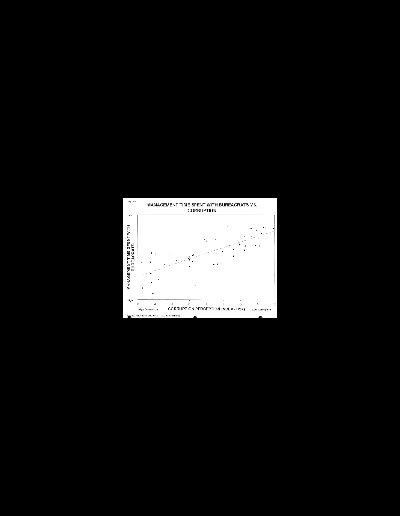
Viewing bribes as a mechanism for equalizing supply and demand also misses
the fact that many public goods ought not to be allocated to the highest
bidder. The aim of many social and antipoverty programs is to allocate
resources according to the needs of the recipients; this goal is subverted
where bribes prevail as an allocating mechanism. Corruption has impaired
the provision of social programs to the intended target populations and,
more generally, corruption has hurt the poor. Finally, the supply-and-demand
view of corruption presumes that the briber gets the good once he has
paid for it. This is often not the case, for corrupt transactions cannot
be enforced through a court of law.
Bribing and rent-seeking also exact a significant economic cost. Talent
is misallocated, as the jobs with the potential to collect lucrative graft
attract people who otherwise would accept the more modest financial rewards
of truly productive occupations. Poor technological decisions are taken
by corrupt bureaucrats, who tend to favor nonstandard, complex, and expensive
capital-intensive projects that make it easier to skim significant sums.
A large defense or infrastructure contract may thus be favored over the
construction of hundreds of primary schools and health clinics. Even more
detrimental to development are the many unproductive "white elephant"
projects that enrich public officials and suppliers-the recent commission
of four incinerators in Lagos, none of which works properly, is one example.
Further, enormous time is lost by entrepreneurs and officials engaged
in corrupt activities. Queuing, negotiating, ensuring the secrecy of the
deals and illicit payments, and guarding against the ever-present risk
of nondelivery of the promised signatures and permits are time-intensive
activities-as is the frequent need to renegotiate or pay an additional
bribe to another bureaucrat. All of these activities come at the expense
of productively running firms and governments.
Indeed, evidence from various countries indicates that a positive relationship
exists between the extent of bribery and the amount of time that an enterprise's
manager spends with public officials. A 1996 enterprise survey showed
that within Ukraine firm owners who pay a lot in bribes have to spend
almost one-third more time with officials than firm owners who pay less
in bribes. Those high-bribing firms also need to spend 75 staff weeks
per year of (nonowner) administration time in dealing with officials,
as compared with a yearly average of 22 staff weeks for low-bribing firms.
Further, using cross-country data we observe that in countries with higher
incidence of corrupt practices firms tend to spend a higher share of management
time with bureaucrats (see Figure Time, and Kaufmann and Wei, for the
coming). And from various data sets it is also calculated that in settings
with higher regulatory and state-bureaucratic interference in business,
the incidence of corrupt practices is significantly higher. Further, the
higher the degree of regulatory discretion, the higher the incidence of
bribery of officials (figure Reg D). Surveys in countries of the former
Soviet Union show that high regulations and taxes are associated with
the need to pay high bribes in order to survive. That situation generates
a high cost of doing business. Further, the evidence from the 49 countries
surveyed by the World Economic Forum reflects that where corruption is
more prevalent, the costs of capital and investing for firms tend to be
higher.
Data and research showing the deleterious effects of corruption
on growth have been mounting. A recent empirical study by economist Paolo
Mauro found that a corrupt country is likely to achieve aggregate investment
levels of almost 5 per cent less than a relatively uncorrupt country and
to lose about half a percentage point of gross domestic product growth
per year. Mauro also found that corruption is likely to distort public
expenditures: Corrupt countries appear to spend less on education. The
harm to development of underinvesting in education is well known. Yet
the effects of illiteracy on corruption are underappreciated and are studied
less often.
There is evidence that corruption slows foreign direct investment; a
recent study by Wei showed that investing in a relatively corrupt country,
as compared with an uncorrupt one, is equivalent to an additional 20 per
cent ("private") tax on the investment. The statistical relationship
between corruption and lower foreign investment is valid across all regions.
Contrary to conventional wisdom, there is no evidence that foreign investors
are any less susceptible to corruption in East Asian economies than in
other countries in the world. This finding also challenges the contention
that the East Asian experience shows that corruption does not hurt investment
and growth. That argument ignores the reality that corruption is only
one of a number of factors explaining growth and development; even the
few East Asian countries that are considerably corrupt have developed
a credible rule of law, maintained decent macroeconomic management, limited
the pervasiveness of corruption, and prevented corrupt practices from
encroaching on their export-oriented policies.
Corruption is negatively associated with developmental objectives everywhere.
Opportunistic bureaucrats and politicians who try to maximize their take
without regard for the impact of such perdition on the "size of the
overall pie" may account for the particularly adverse impact corruption
has in some countries of Africa, South Asia, and the former Soviet Union.
Surveying high-level officials from emerging economies offers complementary
evidence. Public sector corruption was rated as the most severe developmental
obstacle facing their country, and no significant differences exist across
regions. Everywhere, policymaking elites opined that corruption, far from
being a lubricant of development, was a most formidable impediment to
it.
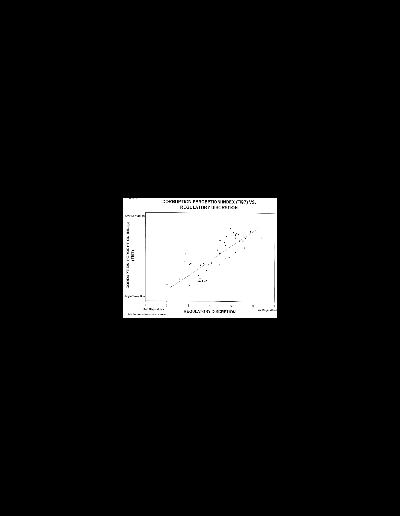
Do Reforms Fuel Corruption?
In recent years, academics and commentators in the mass media have argued
that in transition economies (particularly in the countries of the former
Soviet Union and, Eastern Europe) market liberalization and privatization
have significantly increased corruption. They maintain that these reforms
respond to the vested interests of corrupt elites. Even highly respected
academics are ambivalent on this particular issue, advising extreme caution
in initiating economic reforms when legal institutions are not yet developed.
And in the Winter 1996-97 issue of this magazine, Robert Leiken wrote
that "where corruption is systemic, market and administrative reforms...may
even become counterproductive .... Loosening government controls can facilitate
illicit... economic activity. Moreover, bureaucrats have been known to
compensate for lost revenues by exacting new 'fees' in other areas."
The problem with such perspectives is that what passes for economic reform
often is not. Half-baked, poorly designed, inadequately implemented market
reforms may indeed boost corruption. Well-designed and property executed
market reforms do not. A public monopoly that, through obscure insider
deals, becomes a private monopoly controlled by few shareholders (as happened
in prereform Argentina) is certainly not an example of progress in the
fight against corruption. Instead, a public monopoly, when demonopolized
and followed by privatization through an international, transparent bidding
process, will improve matters. Thanks to deregulation and trade liberalization,
bureaucrats cannot extract as many bribes as before, and stiff competition
will become less a source of corruption. Yet, lowering import tariffs
does little to curb corruption if the rules that give customs officials
the discretion to decide the amount of import tax on each container are
not changed.
|
Market reforms are frequently blamed for increased corruption in
the former communist countries of Central and Eastern Europe. But
with further investigation of these economies a different picture
emerges. While most of the economies in Central and Eastern Europe
and the Baltic's implemented far-reaching economic reforms (macrostabilization,
privatization, liberalization, deregulation, and the development
of market institutions) through the first half of the 1990s, some
in the former Soviet Union lagged behind. The extent of underground
activities has diverged markedly. As illustrated in Figure CEE on
the next page, countries that implemented comprehensive economic
reforms have reversed the initial boom in the underground economy
after communism. At the same time, incomplete reforms that create
either opportunities for discretionary decisions by government officials
or monopolistic structures further fuel preexisting corruption.
What has driven much of the economy underground in the less-reformist
economies? Enterprise surveys shed light on this question. Consider
the share of the enterprise owner's (or senior manager's) time that
is spend dealing with public officials instead of productively running
their firms. In Chile, El Salvador, and Uruguay, that share is 8
to 12 percent; in Lithuania, 15 percent; while in Russia and Ukraine
(which have the largest unofficial economies in nonwar transition
countries) it amounts to 30 to 40 percent of their time The inordinate
amount of time spent With officials is the result of the myriad
regulations and licenses that are required for a firm to operate
and trade. Considerable bargaining also occurs over highly discretionary
and onerous tax regimes. Firms are forced to bribe in order to cut
their tax and regulatory burdens-so they can survive.
Finally, empirical evidence indicates that privatization can also
help in the transition: Privatization transactions have on balance
been less corrupt than others. and most countries that delayed privatization
saw the relative size of their underground economy skyrocket. |
Further, analysts who see market reforms as sources of corruption often
fail to consider the amount of corruption that would occur in the absence
of well-implemented economic reforms. A lack of economic reform can help
to perpetuate corruption, since elite interests become more entrenched
as their financial might accumulates through monopolistic structures.
This "war chest" becomes a major weapon to impede or distort
reforms.
By contrast, fewer regulatory and trade interventions; macroeconomic
stability; and moderate, simple tax regimes with little discretion will
do much to reduce the opportunities for corruption. Analyzing data from
many countries, economists Alberto Ades and Rafael Di Tella found that
trade openness and product competition reduce corruption and that liberalizing
an economy delivers even more corruption-reduction where judicial institutions
are not yet well developed.
Survey responses from elites in emerging economies also reject the notion
that economic reform fuels corruption. The vast majority of respondents
report that corruption would be ameliorated by further economic reform
in the areas of deregulation and liberalization, the budget and the tax
regime, and privatization.
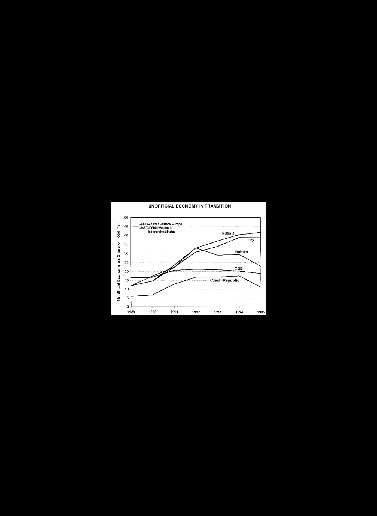
Can The Corruption Fight
Be Won?
The "fatalist" camp often points out the dearth of successes
in anticorruption drives. More generally, they stress that few countries
have significantly reduced corruption in less than a century. Recently,
Hong Kong and Singapore are the countries that have shifted—and quickly—from
being very corrupt to being relatively clean. Earlier, Britain needed
many decades to improve its relatively corrupt structures.
Yet the relative successes are ignored in this absolutist approach to
the issue: Countries have managed to reduce the incidence of corruption
relatively quickly, even if they are far from rendering it irrelevant.
In addition to Hong Kong and Singapore, Botswana is regarded as one of
the least corrupt countries; Chile, Malaysia, and Portugal have undergone
significant improvements over the past dozen years or so; and Bolivia,
the Philippines, Poland, and Uganda, to name a few, have also scored successes
recently.
What are the most common features of these successes? Anticorruption
bodies, such as the Independent Commission Against Corruption in Hong
Kong and smaller institutional variations thereof in Botswana, Chile,
Malaysia, and Singapore are credited with progress in fighting corruption.
Bolivia and Uganda exemplify success through a broader institutional approach.
In Bolivia, the reformist mayor of La Paz initiated a major institutional
overhaul of the city's institutions in the mid- 1980s. In Uganda, the
Museveni government, which came to power in 1986, implemented a strategy
that encompassed reforming the civil service, strengthening the auditor
general's office, empowering a reputable inspector general to investigate
and prosecute corruption, and implementing an anticorruption public information
campaign.
The survey responses provide a more nuanced perspective, however, since
most respondents did not think highly of such anticorruption bodies. To
be credible, they felt, such institutions had to go hand in hand with
a good example set by honest leadership. Otherwise anticorruption bodies
are easily rendered useless or, worse, misused for political gain. Further,
respondents emphasized the importance of complementary economic reforms;
there is no point in creating anticorruption agencies where bureaucrats
and politicians intervene at will to apply regulatory restrictions.
The cleanup of the Philippine tax inspectorate (the Bureau of Internal
Revenue, or bir) in the 1970s, under the charismatic and squeaky- clean
leadership of Judge Efren Plana, and the ongoing overhaul of Argentina's
bloated social security system (ANSES) are strong illustrations of effective
institutional reform. In both cases the process included the immediate
firing of corrupt personnel, the professionalization of the staff, new
control systems, and modern incentive and performance assessment systems.
Even then, economic reforms played an important role. In the Philippines,
tax reforms were implemented simultaneously with the institutional revamping
of the bir; tax rates were simplified, and exemptions were significantly
reduced. These measures severely curtailed the incentives and discretion
to extract bribes. In the case of ANSES, competition is aiding in the
internal cleanup and reform effort: ANSES is ceasing to be the state monopoly
provider of social security, instead, private pension institutions are
being set up. Many of the other "institutional" success stories,
in places such as Botswana, Chile, Hong Kong, Malaysia, Poland, Singapore,
and Uganda, have also involved economic liberalization and reduced discretionary
regulations.
The contrast with some countries in the former Soviet Union is stark.
The president of Ukraine, concerned about growing corruption, has ordered
various institutional initiatives to address the problem.
Yet at the same time regulations continue to proliferate. For instance,
the Kiev province recently decreed that any firm selling goods within
the 14 different counties of the province must have a trading permit.
No anticorruption drive can succeed in such a policy framework.
More Reform, Less Corruption
The evidence clearly points to promoting economic reform as a way of
addressing corruption. The economic reform agenda in many countries is
far from finished, and its anticorruption potential often has been underemphasized
and even maligned.
In designing reform programs, it is important to identify the discretionary
control rights at the disposal of politicians and bureaucrats. The majority
of politicians are clean, civic-minded citizens, but a significantly corrupt
minority can take a large toll on an economy. Typically, the main activities
in need of reform are those that involve discretion, including the issuance
of licenses, permits, quantitative import restrictions (quotas), passports,
customs and border-crossing documentation, and banking licenses; the implementation
of price controls; the blocking of entry to new firms and investors and
the provision of monopoly power; the awarding of public procurement contracts;
the granting of subsidies, soft credits, tax exemptions, and inflated
pensions and the allowing of tax evasion; the imposition of foreign-exchange
controls resulting in multiple exchange rates, the overinvoicing of imports,
and the flight of capital; the allocation of real estate, grain storage
facilities, telecommunications, and power infrastructure; the discretionary
application of socially desirable regulations such as those that apply
to public health and the environment; and the maintenance of obscure or
secret budgetary accounts as well as other "leakages" from the
budget to private accounts.
|
The author surveyed 150 members of the 'elite from 63 developing
and formerly communist countries who attended mid-career training
programs and other summer courses at Harvard University during 1996.
Almost one-half of the respondents thought that corruption has
increased in their country over the past 10 years, and another one-third
believed that it had stayed roughly the same. Corruption in the
public sector was seen as significantly more prevalent than in the
private sector. When asked to rate the severity of possible impediments
to development and growth in their country among a list of 11 choices,
public sector corruption was rated as the most severe obstacle (see
bar chart 1).
The survey respondents support the notion that corruption and lack
of economic reform go hand in hand. They are of the view that their
country ought to have made more progress in implementing economic
reforms, and they blame corrupt interests as one important reason
for inaction (bar chart 2). At the same time, they believe that
economic reforms-particularly deregulation and liberalization, modernizing
the budget and the tax regime, and privatization-can play a key
role in alleviating corruption (see bar chart 3 below).
While the respondents emphasized the domestic causes of corruption,
about two-thirds of them also regard foreign corruption as at least
as great a problem. A majority believes that OECD member states
should implement anticorruption measures targeting their traders
and investors abroad and that international institutions should
make curbing corruption a priority and a precondition of assistance
to their countries |
The discretionary control rights of officials can be sharply curtailed
through a package of economic reforms. Where some regulations ought to
stay because of their social desirability, transparent market mechanisms
can be used to limit abuses (auctions of pollution quotas, for example).
Yet many other economic regulations need to disappear altogether. Conventional
economic reforms can have a significant impact via macroeconomic stabilization,
which removes the discretion to provide subsidies and soft credits; via
privatization, with its depoliticization of state-owned enterprises; and
by the building of a constituency that favors competition and broad market
liberalization.
Yet simply reforming macroeconomic policies is insufficient. Further
emphasis must be placed on fuller liberalization; microeconomic deregulation;
tax reform (creating simple, moderate, and uniform tax rates and regimes
without exemptions and with determined enforcement); government and budget
reform (establishing transparent, financially sound revenue and expenditure
mechanisms); and, over the long haul, institutional reform (revamping
customs and eliminating redundant ministries and agencies) and civil service
and legal reform. Setting up an improved civil service pay system, with
adequate salary incentives and enforceable penalties for malfeasance,
is also critical. Countries that have established a system of rewards
for civil servants that is competitive with the private sector have also
reduced corruption. Many countries also need to give additional focus
to developing the financial sector, because market-determined interest
rates, improved banking supervision, reserve-requirement compliance, and
payment systems all reduce the opportunities for fraud-driven financial
crises. They also limit the loopholes through which money-laundering grows
out of control.
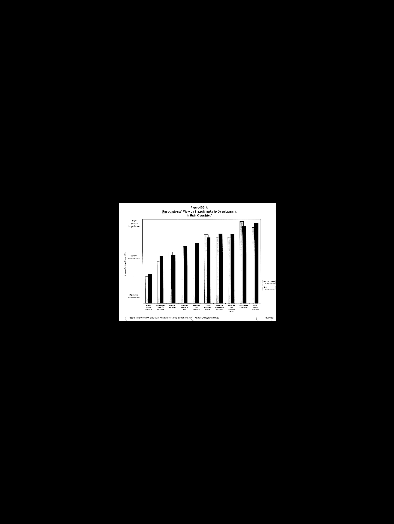
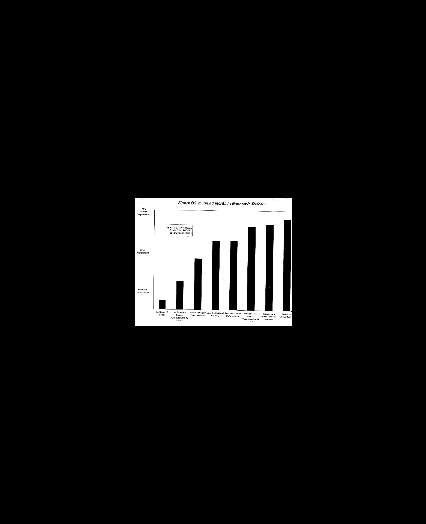
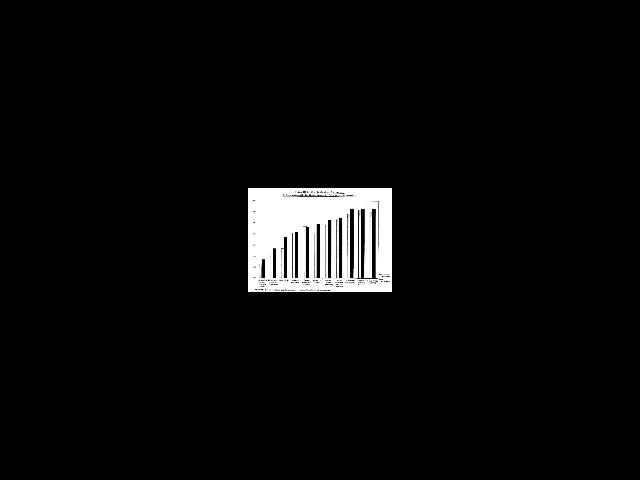
These two pillars of the next stage of reform-government and regulatory
reform-have been neglected in many developing and transition economies.
The "state of the art" in these fields is not as advanced as
in macrostabilization or trade liberalization, where the "jury has
long been out" on what to do and how to do it. Emerging economies
and the international community need to elevate the priority of these
reform areas. The payoff on these difficult and time-consuming measures
will be substantial: Virtually all economic, deregulation, and government-reform
measures would not only help to curb corruption but also to sustain national
growth strategies.
Time for Action
While the respondents to the survey of elites believe that corruption
in their own emerging economies can be addressed through domestic reforms,
they also feel that industrialized countries need to reduce the incentives
for engaging in corrupt practices abroad. For example, industrialized
nations could cease to allow tax deductions for bribery expenses (where
they exist), take steps to criminalize bribery internationally, and enact
measures to prevent money-laundering by international financial centers.
Civil society and much of the public sector in these emerging economies
appear ready to welcome the support of international financial institutions
(IFIs) in spearheading anticorruption reforms in their own countries.
Many survey respondents would even back explicit anticorruption conditionality
in IFI lending programs.
A clear signal from the international community would be sent if it withdrew
financial support from egregiously corrupt countries. In relatively corrupt
countries, pressures could also be brought to bear by pulling out from
corrupt industries, since often particular sectors are especially afflicted,
and their identification is relatively straightforward. The gas industry
in some countries of the former Soviet bloc comes to mind, there are examples
elsewhere as well. Corruption in a specific industry often relates to
rules that inhibit competition, in state-dominated sectors, it results
from practices that obscure procurement procedures. A resolute and coordinated
stance by the World Bank, the International Monetary Fund (IMF), and other
multilateral and bilateral agencies-as well as moves by investment and
export-promotion agencies and banks to withdraw support from such sectors
until they become competitive and transparent-would make a difference.
A collaborative approach among all the relevant international organizations
and the member nations of the Organization for Economic Cooperation and
Development (OECD) is critical. The IMF, the World Bank, the World Trade
Organization, the Organization of American States (OAS), the OECD, the
United Nations agencies, and the regional development banks need to regard
the challenge of fighting corruption as a common development objective.
The corruption issue ought to gain a prominent place at the annual Group
of Seven summits, which would send a strong message about the industrialized
countries' resolve and responsibility on this issue.
Yet, so far, corruption has mostly inspired analyses, conferences, and
writings rather than action in the international arena. The major anticorruption
speech by the president of the World Bank at the recent IMF/World Bank
annual meetings and the OAS antibribery convention are commendable first
steps, as is the OECD's recommendation to its members to criminalize the
tax deductibility of bribery expenses. The time is ripe for a revolution:
Many emerging economies are now prepared for the international community
to deliver concrete support in the fight against corruption. Public education
efforts and training programs in investigative journalism, accounting,
and auditing can all get a boost with the international community's support.
The World Bank, which is poised to take concrete action, can also deliver
technical assistance programs to help reorganize customs institutions,
develop transparent and effective treasury departments, and spearhead
procurement and auditing reform within governments. Pilot programs could
be initiated rapidly, in collaboration with Transparency International
and domestic institutions that want to take the lead in a cleanup effort.
Supporting Transparency International's public education and information
role in publicizing individual countries' track records on corruption
is also likely to have high payoffs.
Finally, international institutions should take steps to encourage participatory
approaches in these countries in order to build consensus for anticorruption
drives and associated reforms. Civil society is likely to be a major ally
in resisting corruption. More and more, it is this ally that seeks concrete
support from Western agencies and countries in actively combatting corruption.
Want to Know More?
The literature on corruption is expanding in tandem with the awareness
of its incidence and ill effects throughout the world. as discussed in
Moises Naim's article, "The Corruption Eruption," in The Brown
Journal of World Affairs 2, no. 2 (Summer 1995). Yet there are very old
writings on the role of the state that address the issue of corruption
as well, as exemplified by The Arthashastra by Kautilya, circa 300 B.C.
to 150 A.D. (L. N. Rangarajan, ed., Calcutta: Penguin Books, 1987). The
classic analytical book in the modern economic literature is Susan Rose-Ackerman's
Corruption: A Study in Political Economy (New York: Academic Press, 1978).
Andrei Shleifer and Robert Vishney's article "Corruption," in
The Quarterly Journal of Economics 108, no. 3 (August 1993), presents
a more recent typology of corruption with an analysis of its consequences.
Robert Klitgaard addressed specific cases of corruption in developing
countries in his book Controlling Corruption (Berkeley: University of
California Press, 1988). Paolo Mauro showed econometrically the negative
effects of corruption on investment and growth utilizing cross-country
data in "Corruption and Growth" in The Quarterly Journal of
Economics 110, no. 3 (August 1995). Pranab Bardhan provides a survey of
the recent literature in his University of California, Berkeley, working
paper, "The Economics of Corruption in Less Developed Countries:
A Review of Issues" (Berkeley: Center for International and Development
Economics Research, February 1996) and so does Susan Rose-Ackerman of
Yale University in recent papers.
For more details on additional bibliography and on some of the author's
research, see "The Missing Pillar of a Growth Strategy for Ukraine:
Reforms for Private Sector Development," in Ukraine: Accelerating
the Transition to Market (Peter K. Cornelius and Patrick Lenain, eds.,
Washington, D.C.: International Monetary Fund, 1997); "Integrating
the Unofficial Economy into the Dynamics of Post-Socialist Economies,"
coauthored with Aleksander Kaliberda in Economic Transition in Russia
and the New States of Eurasia (B. Kaminski, ed., Armonk, New York: M.E.
Sharpe, 1996); and "Privatization and Corruption in Transition Economies,"
with Paul Siegelbaum, in the Journal of International Affairs 50, no.
2 (Winter 1996). For further details on the survey of elite stakeholders
from emerging economies and on ongoing research on the topics, contact
the author at [email protected]. Transparency International,
which generates a corruption perceptions index for individual countries
based on business surveys, has a Web site that can be accessed through
the FOREIGN POLICY site at www. foreignpolicy. com. Finally, the World
Development Report 1997 (Washington, D.C.: World Bank) released in June
1997, addresses the issue of corruption.
NOTES
1 This is a somewhat revised version of a
paper published in Foreign Policy, Summer 1997,. Pp. 114-131. The paper
was written while the author was a visiting scholar at Harvard University.
In this paper the focus is on economic and administrative corruption (while
acknowledging the importance of other corruption form), consistent with
the definition.
|

